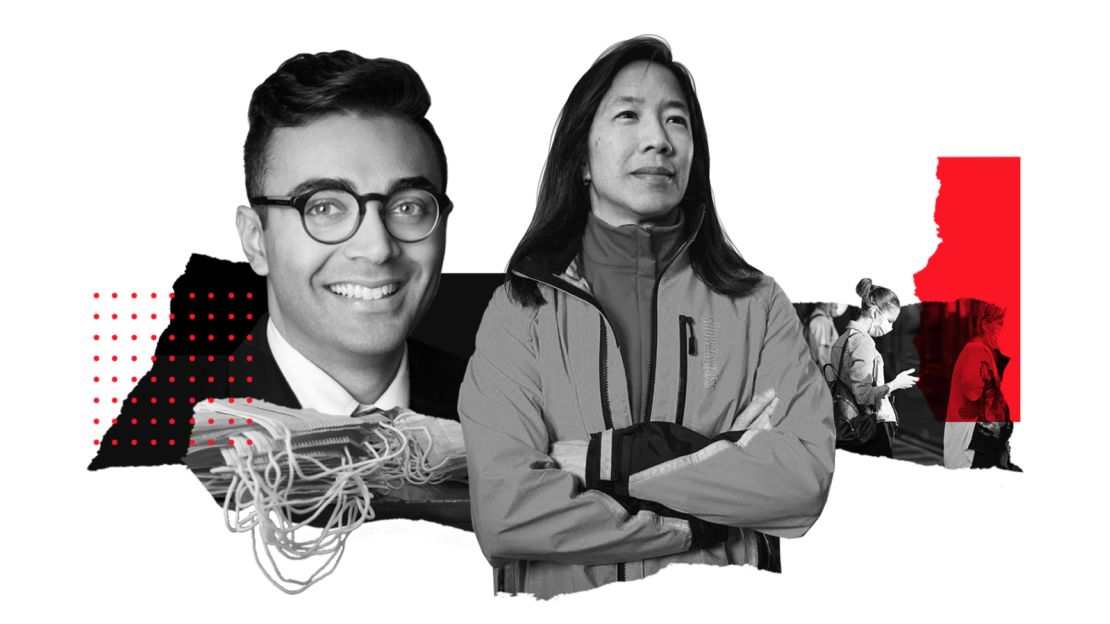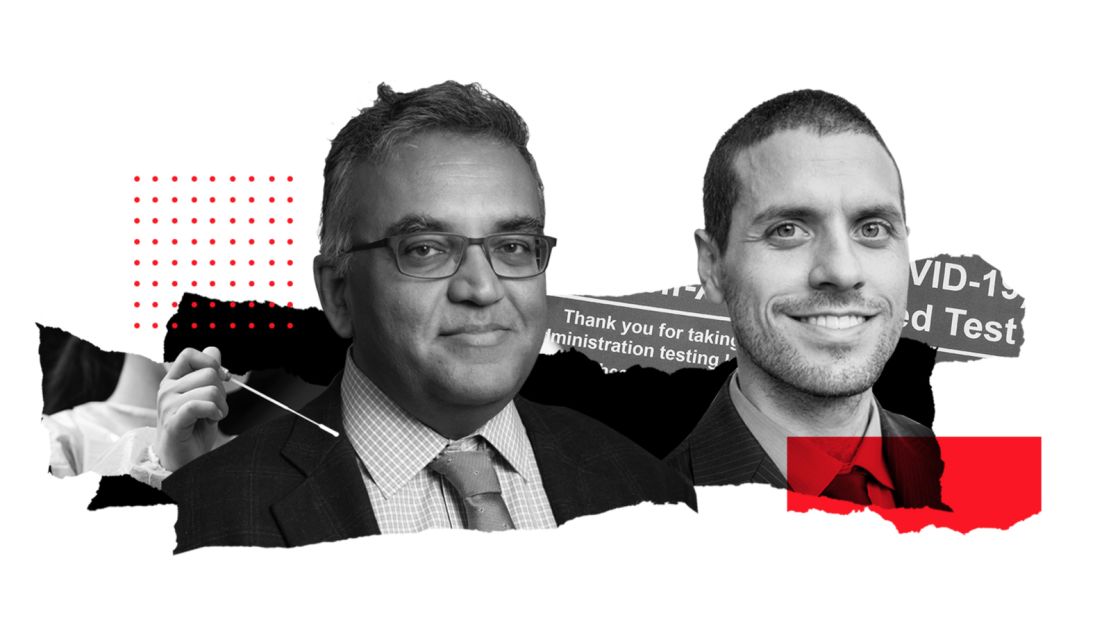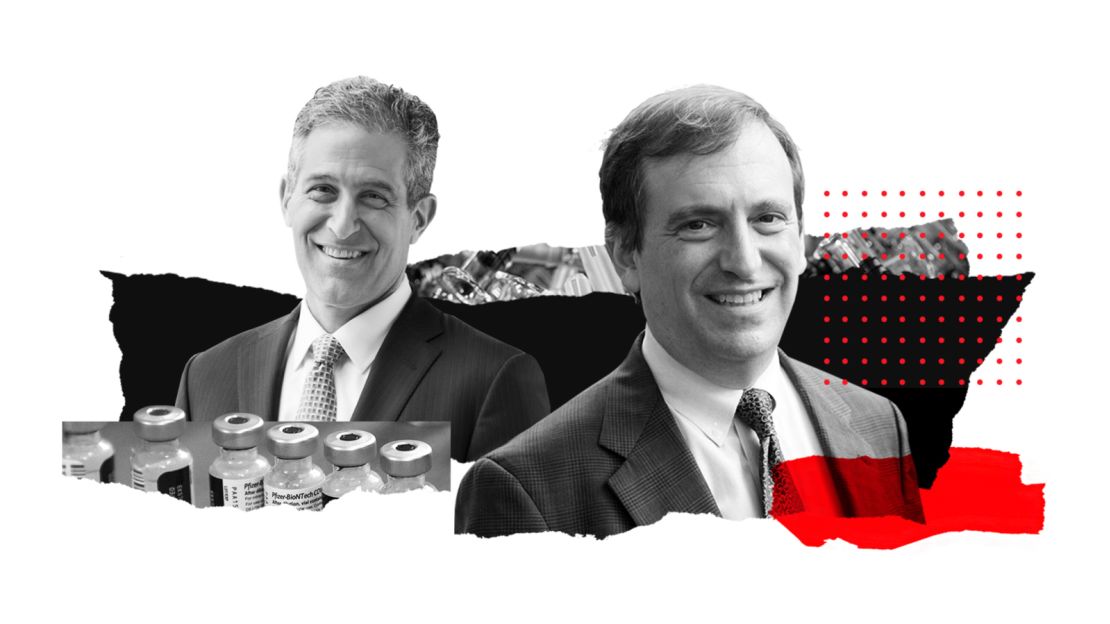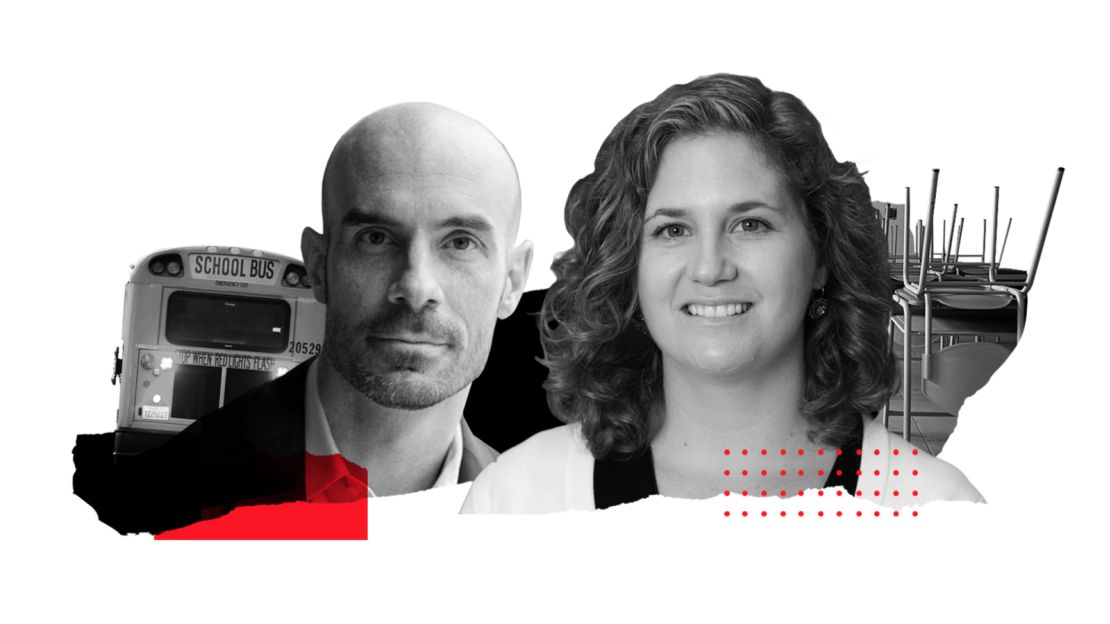It has been more than one year since the first reported case of Covid-19 in the United States – a day that changed our country forever. The arrival of the novel coronavirus on our doorstep continues to challenge our public health officials, scientists, health care workers and, frankly, the American public, to go above and beyond the call of duty and to do everything we can to battle the relentless threat that it poses.
It’s no secret that our handling of the virus over the last year has had its share of shortcomings, and with a new administration in place, both the expectations and the stakes couldn’t be higher.
So far, President Joe Biden has made some sweeping proposals about how he’ll handle the pandemic and has made it clear that getting Covid-19 under control is his top priority.
He’s already proposed a $1.9 trillion “American Rescue Plan” that aims to help slow the spread of coronavirus and stimulate the economy. Among the slew of executive orders he signed are ones dealing with Covid-19 testing, school reopenings and ramping up the production of masks and other PPE. Another big issue the Biden team has wasted no time tackling: improving vaccine distribution and making it more transparent.
But as we all know, even the best laid plans often go awry – or meet resistance, both political and civil.
Biden has said he wants to set aside politics and face this virus as one nation, but the question remains: How should we best tackle these big problems?
We asked eight experts how they would advise the Biden administration to tackle four key areas – masks, testing, vaccines and schools.

Masks
Wearing a mask appears to be simple and straightforward – put one on and march out into the world – but it’s not. In addition to having become highly politicized, other issues affect masks, including quality questions and supply problems. Even after a year, the fact is there are not enough high-quality masks to go around for frontline workers, let alone the general population.
Before taking office, Biden signaled he takes masking much more seriously than President Donald Trump by stating his intention to launch a 100-day masking challenge to Americans. And within hours of being sworn into office, Biden signed an executive order requiring masks on all federal property.
“Masks are incredibly important for slowing the transmission of Covid-19. We’ve seen this in other countries where they have widespread mask-wearing: the numbers of cases are much lower than in the United States,” said Linsey Marr, a professor of civil and environmental engineering at Virginia Tech.
Marr, who studied “viruses in the air,” points the finger at the patchwork of different regulations across the states and an incomplete understanding among the general public of the importance of wearing masks. “It’s been very clear from the data that states that have implemented strong mask policies have a slower increase in the number of cases or even a decrease – but it’s not masks alone; it’s masks in combination with other measures such as distancing and improved ventilation and hand washing,” she said.

“We’ve come a long way since last March. There are a lot of people wearing masks and a lot of places, but there’s still some resistance. And I think, if we can improve that – the number of people wearing masks and the quality of the mask we’re wearing – we can make a bigger dent in transmission,” she added.
?Marr said she would make three main recommendations to the Biden team. “One is, we need strong federal leadership on masks, the importance of masks and requiring them in all indoor spaces where people are sharing the air,” she stressed.?
?“The second thing is … because of the new variants of the virus, which seem to be much more easily transmitted, we need to start thinking about improving our masks. And that could be things such as sending every citizen several masks that are of good quality or setting some kind of standards so that people are better able to judge the quality of masks,” she said.
?“And the third thing that I would recommend is increased use of carbon dioxide sensors as a measure of whether a place has good ventilation or not,” Marr said. She explained that carbon dioxide is expelled into the air when people exhale; in poorly ventilated areas, it builds up.
?“We know from past studies and guidelines that if you keep that level below 800 parts per million you dramatically reduce the risk of transmission of diseases that go through the air,” she said. “With that information, people will know, ‘OK, is this place safer to go into or maybe they need to open some doors and windows or improve their filtration.’”
?Marr isn’t the only one to put masks front and center of the effort to beat back the pandemic.? Back in the spring, Dr. Abraar Karan, an internal medicine physician at Brigham and Women’s Hospital and Harvard Medical School, and two colleagues started brainstorming about what needed to be done to get the country back on track.
?“One of the things that came out was that this was primarily a respiratory infectious pathogen and it was primarily transmitted by droplets and also by aerosols,” he said. The trio concluded that the general population needs access to the same tool that doctors (if they were lucky) had: reusable, high-quality masks, something along the lines of an N95 mask.
?Karan and his colleagues, who have co-authored several articles on the topic, are not alone in thinking along these lines. Several European countries, including France and Germany, have recently started mandating better-quality masks in public.
But it’s a challenge for the average American to get a good-quality mask. “Right now, it’s extremely confusing navigating the mask market … there are no really great, cheap, affordable, scalable options that are reusable that also provide high filtration, that you can easily find,” Karan said.
“So, we’re thinking about [delivering] a kit that includes a high-filtration mask and also may include some kind of a device that can help with the fit of other masks,” he said. Karan said the mask should be comfortable, washable, reusable, well-fitting and it should allow people to put in additional filters to for higher-risk situations.
?So, how to get a great mask in the hands of every American? Karan knows it’s no small lift; he and his colleagues have a policy proposal they hope to put to the Biden team. “The two main components are: get the kit together and figure out a way to get that kit to people.”
?Among the logistical issues they tackle: finding a mask of suitable quality and ramping up manufacturing; distributing them to every American; subsidizing the masks so that they are free or low-cost; and then, of course, getting people to wear them.
?A “mask czar” could be appointed by Biden to see this effort through, said Karan. And the Defense Production Act could be used to kickstart or supplement production – a step Biden announced Thursday he is taking. “We have to start thinking of the pandemic as a wartime effort,” Karan said, a sentiment Biden echoed his speech.
Distribution channels could include using the post office to mail them or as a pickup spot; setting up vending machines in grocery stores, pharmacies, religious establishments and giving each citizen a code to use.
?A public health campaign could help spread the word and encourage those who are on the fence. And even some people still balk at mask-wearing, the plan still works.
?“You don’t need 100% of people to do anything. You need some people to do it and the pandemic shrinks … The more people that mask, the more people that are protected, and so you can reach a threshold where if enough people are masked at the most critical times, you then can still help the pandemic,” he said.?

Testing
While the FDA has given emergency authorization to many tests for Covid-19, the entire testing ecosystem has been hamstrung by a lack of unified testing strategy: whom to test, when to test, and which kind of test to use. And although the world is one year into this pandemic, there are still supply bottlenecks as well as delays in getting results. All of these issues render testing – as a way to get infected people quickly into quarantine and even for diagnostic purposes – almost moot.
“Obviously, we have other tools like mask wearing and vaccinations, but testing alone if deployed widely can end up making a very large difference in controlling the pandemic,” says Dr. Ashish Jha, dean of the Brown University School of Public Health.
The first step of making testing an effective tool is to aggressively scale up manufacturing. Jha says we should use the Defense Production Act to “ramp up this kind of testing because if you really want to do society-wide testing of all high-risk situations, you probably be need to be doing 10 to 15 million tests a day.”
The type of strategy he’d like to see is using rapid antigen tests for essential workers and people in high-risk places that include schools, nursing homes and prisons – basically, “any place where large numbers of people gathered indoors.” And how often would they get tested? “In the ideal world based on the modeling data – twice-a-week testing,” Jha says.
Jha has seen this strategy work at his own university’s campus where he said everyone was tested regularly. “It was a great reminder that if you take a population of people and do regular testing twice a week, that you can actually keep outbreaks under control and you can continue, not totally normal operations, but operations like with in-person classes throughout the fall,” he said.
By targeting testing, Jha argues it can bring total numbers down. “The bottom line is you want to be doing ongoing regular testing of these populations. It wouldn’t just protect them – it would keep infection numbers in the entire community so low that would end up benefiting everybody else as well.”
Like Jha, Dr. Michael Mina, assistant professor of epidemiology at the Harvard T.H. Chan School of Public Health, is also an advocate for rapid antigen tests. “The surveillance PCR testing that we’ve been doing, like I said, it catches about 5% of people in time to act and it’s extremely difficult to scale up PCR much.” Mina says his advice to Biden would be, “Ask Congress to appropriate $5 billion, which is a drop in the bucket for this virus at this point, to scale up and deploy rapid antigen testing so that every American can use a test twice a week.”
Mina explains the twice-a-week interval using rapid antigen testing: “Let’s say it’s a Monday or on Day Zero you get exposed. Day three, you might turn positive on a PCR later that night. Day three and a half or maybe early day four you might turn positive on an antigen test. And so, the whole idea of twice a week is to shave off a considerable part of people’s infectious course,” he said.
“And so, if you’re using it twice a week, even if you turn positive in the middle of your two tests, by the time you do test, especially because it’s rapid, you’ll be able to pull yourself out when you’ve only been spreading for one and a half or two days instead of five days and six days.”
Mina also emphasizes that the tests need to be affordable for every American to have access. “Five bucks is a good price. And it’s the right price that if Congress appropriates $5 or $10 billion, we could really, really make a major, major difference in this pandemic with that amount of money still giving the companies what they want,” he said.
Also, important: privacy. Mina says that it’s important to “meet the American public where they are at” and make reporting test results voluntary. “You pick up your iPhone if you want and do a one-click reporting if you want,” he said.
“And if not, you keep it to yourself and you yourself know that you’re infectious today. And so, you won’t go visit your grandma in the nursing home, maybe you won’t go to church, maybe you won’t eat lunch with your buddies, but it’s on your terms.”
And that’s key to making this one of the most successful tools of the pandemic. “I think this test is the most equitable way to approach fighting this pandemic today. It is a test that can truly be scaled to every household, rich or poor. People can use it on their own terms, regardless of any politics, regardless of how they feel about this virus. You know, and if people don’t want to use it, that’s their prerogative. But as long as we can get a large number of people using it twice a week, we can actually start to really contain this virus,” Mina said.

Vaccines
Unless you have been living blissfully unplugged since the first vaccine received emergency authorization last month, you’ve certainly read and heard how confusing the vaccination landscape is. Questions abound over who is eligible to get vaccinated (it varies by state), where to go and how to sign up. There are even questions about basics like how much vaccine is available. Vaccinating the majority of the population is a sure way out of the pandemic, both in this country and globally. It’s imperative to do it right and do it fast.
“Federal leadership, not federal takeover,” is how Marc Lipsitch, a professor of epidemiology at Harvard, sees the role of the new administration in the vaccine rollout. “I don’t see a sudden change that state health departments bow out, because they are the ones with the personnel and the experience and the knowledge of the local conditions – and that all matters when you’re in a rush,” Lipsitch added.
He also advocates for quickly extending vaccines to the next priority groups if resources are available. “I think we need to be ready to move quickly from the early groups to add in the second and third tiers of groups. I think the prioritization serves an important function, it really does matter for those most at risk to get vaccinated first, and for health care workers to get vaccinated first,” he said.
“And I think opening it up, and where there is personnel available to vaccinate a larger group of people, and there are vaccines available, we shouldn’t be holding back, especially if the demand from the earlier groups is starting to slow.”
But Lipsitch also emphasizes that providing clear communication about how people can get a vaccine is key to a successful rollout.
“There is a need to use a range of different approaches to reach people and make it easy for them to get access to the vaccine. And the internet is great, but it is not great for everyone – those who don’t have it or those who are of an age that they find it hard to navigate,” he said.

Dr. Richard Besser, a former CDC director who in now president and CEO of the Robert Wood Johnson Foundation, is focused on equitable access to the vaccine.
“I worry that opening the floodgates so that, you know, 100 million people are now eligible for vaccination, may create a situation in which our numbers look really good, but those people who are keeping our food supply going, our transportation systems going, they’re doing home health care, that these individuals will not be reached by vaccine distribution systems,” Besser said.
“And the incredible health disparities we’ve seen in this pandemic, where Black Americans, Latino Americans, Native Americans are getting infected, hospitalized and dying at rates that far surpass the proportion of the community – that that will continue and could, in fact, widen.”
Offering transportation to vaccination sites and keeping vaccination clinics open 24/7 could help combat health disparities, he said.
Besser also believes collecting vaccine data could play a role in equitable distribution.
“One of the pieces, though, that I haven’t heard enough discussion of and it’s critically important, is collection of data that can be broken down by neighborhood, by zip code, by race, by ethnicity, by gender, so we can see where vaccine is going and where it’s not. That will allow us to know where additional resources have to be directed to meet needs.”
Beyond the physical distribution and administration of vaccines, both Lipsitch and Besser stressed that vaccine hesitancy is a challenge that will need to be addressed head on.

Schools
Most educators, children and parents would probably agree that distance learning is but a shadow of its in-person counterpart, educationally speaking. Yet it’s a reality that many school-age children in this country have had to adapt to since this spring, when Covid-19 forced many states, counties and cities to shutter school buildings rather than risk disease outbreaks. Not only is learning affected, but there are no opportunities for critical social interactions. Additionally, distance learning provides none of the additional support that many children need or rely on, such as school meals and adequate supervision. Biden promised on Thursday to help get elementary and middle schools back open within his first 100 days.
School closures are “nothing short of a national emergency,” said Joseph G. Allen, an associate professor at Harvard T.H. Chan School of Public Health and the director of the school’s Healthy Buildings program. He’s also the chair of the Lancet’s Covid-19 commission task force on safe work, safe schools and safe travel.
Allen, who this summer helped put together a study of risk reduction strategies to help schools reopen safely, said he would like to see them reopen before the 100 days Biden has pledged.
To do that, Allen outlines two crucial steps.
First, “you must have universal masking in schools. And we are well beyond the point where any mask will do: three-layer surgical mask for teachers and adults who are higher risk. A surgical mask with a cloth mask on top of it can get you over ninety-one percent removal efficiency for particles,” he said.?
The second part of the equation is addressing ventilation and airflow issues. “Aerosols – respiratory aerosols that people breathe – can build up indoors and they will accumulate unless they’re removed through ventilation or cleaned out of the air through filtration,” he said.
While many school buildings across the country are in dire need of costly infrastructure updates, addressing the ventilation issue quickly “does not have to be expensive or complicated. Opening up the windows. Even in cold weather areas, an inch or two inches can help improve the air exchange rate.”
But Allen said the secret weapon lies in portable air cleaners with HEPA filters, which cost a couple of hundred dollars each.
“These are the types of resources the federal government can provide that provide an instant stopgap measure to help address airborne particles in classrooms that could be delivered in weeks. And it’s simple technology. You plug it in and you turn it on high, put it in the middle of the room. You’re done,” he said.
Allen called them reasonable and attainable. Moreover, the fix isn’t as expensive as it may seem: He estimates the cost at a couple of billion dollars. Compared to completely reinstalling or retrofitting the ventilation systems in school buildings nationwide, that isn’t much. Best of all, he said, “it can be done fast.”

Jennifer Nuzzo, a senior scholar at the Johns Hopkins Center for Health Security and an associate professor at the Johns Hopkins Bloomberg School of Public Health, has been working on pandemic preparedness for about 20 years. She calls schools a “critical infrastructure” and said it’s important that “we get them open as quickly as possible,” noting it is important to strike a balance between the known benefits with the potential harms with the potential benefits.
Nuzzo outlined “three clear priorities” for education right now.
“One is, of course, we need to safely return students back to the classroom as quickly as possible. And that’s going to require a mix of the safety protocols and perhaps targeted use of vaccination,” she said. “We have gotten lucky with the science that we now have a safe and effective vaccine. So, we should absolutely be talking about targeting the use of that in teachers to allow them to return to school and feel safe in returning to school.”
Safety protocols include steps like cohorting students to limit the number of people who interact with one another; either upgrading building ventilation systems or using portable options; identifying alternative spaces to hold classes that would allow children to be spaced apart more; and in some cases, moving to hybrid models.
“All of those things add up. I mean, we’re talking about layered protection: masks, physical distance, trying to improve ventilation, trying to increase hygiene in schools,” she said.
Get CNN Health's weekly newsletter
Sign up here to get The Results Are In with Dr. Sanjay Gupta every Tuesday from the CNN Health team.
“Of course, it is always easier to do this in the context of being in a community that has a low level of infection to begin with. So, in communities where the case numbers are skyrocketing, it’s going to be much harder to keep the virus out of classrooms. (That) is an issue that must be tackled as a matter of priority. Unfortunately, what we’ve seen in a number of communities is, frankly, we seem to want to open up everything else before we’ve ever gotten to the point where we’re able to reopen schools. And in my view, that’s a really misplaced prioritization,” said Nuzzo.
Other priorities look toward the future.
“The second priority is dealing with the learning loss that we have seen to date. In many places, children will, by the time they’re able to return to the classroom, have been out of the classroom for more than a year,” she said.
She notes that this learning loss is not shared by all equally. “There’s concern … that disparities that we see in education and achievement will only be exacerbated by the time spent out of the classroom. So, we need an educational recovery program,” she said, adding that school systems will also need to find all those students “lost” to the system, bring them back in and bring them up to speed.
And lastly comes the need to plan for the future. “Unfortunately, this is not going to be the last pandemic that we’re going to face,” she said. “So, what is our strategy for dealing with schools? When future infectious disease emergencies arise, are we going to have to close yet again for more than a year? I really hope not.”

